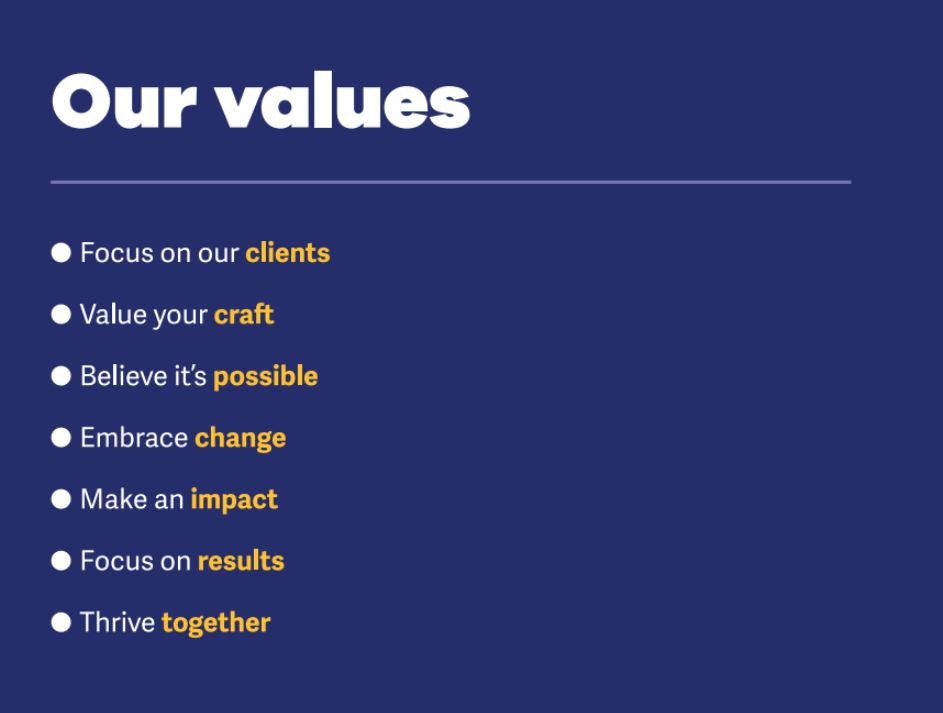Changes in the world and workplace this year have prompted a shift from traditional approaches to leadership.
With employees working remotely in disparate locations and economic uncertainty, accountancy firm leaders must adapt their approach and style. They need to continually find new ways to pull their teams together, rally them around a cause and keep them motivated.
I’m sure some making the shift to remote leadership will find it easy; others might need to develop new skills, change their mindset or put in place new structures such as vision, values or objectives to keep the business and teams on course.
If you’re like me, you’ve probably invested a good deal of time reflecting on your own experiences and what others have taught you about the art and craft of leadership. What does it really mean to be an effective leader?
The concept of leadership is easy, right? Craft a vision and strategy, motivate people to execute that strategy for customers, and deliver commercial returns for your firm. Simple.
Well, in theory, yes, but in practice, this all takes hard work and determination. Defining the vision, setting the culture, aligning teams, getting them to buy into it, living out the vision and values, and delivering on objectives takes time and constant positive reinforcement.
When we moved to working remotely almost overnight, I was glad to have already put in place a number of things that made the shift easier. I still had to adapt, and I’m not claiming it was ‘easy’, but I wanted to share some of the key things that made this whole ordeal far less stressful than it might otherwise have been.
These measures meant I didn’t need to worry about whether employees knew what we were doing as a company, what they needed to do to contribute and how they needed to behave. They left me free to concentrate on leading them through the pandemic, pivoting some of our activity, and spending time helping individuals deal with the emotional aspects of the situation.
In true digital marketing style, I’ve boiled those down into seven leadership tips.
Create a sense of purpose
The foundation of any leadership strategy is setting direction. You need to show people in the company that it’s part of something bigger and create a feeling of organisational self-worth.
For accounting firms, that means creating a sense of something beyond finance and crunching numbers. How does your work help people, families, communities and industry sectors thrive and survive?
For me, the vision isn’t just about setting the direction – it’s about creating a sense of shared responsibility around a challenge that you are helping your clients to meet.
I find setting a big goal three to five years in the future gives a business something that’s attainable but stretching.
At the same time, don’t forget to provide a vision of what success looks like.
When I set PracticeWeb’s vision, some of the early questions I had were, first, how will we know we’ve achieved our vision? And secondly, how will we know if we’re on or off track?
That’s why I took the time to set high level markers that would tell us when we’d got there so we’ll know it’s time to reflect and celebrate.
Define your culture through values
Culture has to come from the top.
It’s how you want your teams to behave with each other, with your clients, and any time they’re representing your accounting firm.
To help create a culture, come up with a set of values. These are short sentences, statements or words that have meaning and should complete the thought, ‘In our firm, we value…’
And it’s no good just writing them down and leaving them to gather dust. We have seven values in PracticeWeb against which we test ourselves all the time.
You need to continually and positively reinforce the values, too. Show appreciation when someone displays them and pull people up when they don’t. If you have a larger team which includes line managers, make sure they know the values and are equipped to demonstrate and explain them to those who report to them.
Company meetings and one-to-ones are a great opportunity to talk in a formal setting about how employees are living the values. But informal is also important – often more important, in fact, because praise delivered casually, one-to-one, is often more heartfelt and meaningful.
Put the customer first
From existing staff through to new recruits, it’s crucial everyone has a clear understanding of who your customers are, what makes them tick and how your products and services meet their needs.
This is how you make sure customer experience is at the forefront of the business’s collective thinking.
If every employee knows what your clients need, want and expect, they’ll be well placed to build empathy and provide a standout service.
At PracticeWeb we’ve built out our own ideal client personas which we return to constantly – will this work for and meet the needs of persona X, persona Y, or both? If not, why are we doing it this way?
One challenge under current circumstances is supervision. I used to be able to hear how calls were being answered and handled so I could be sure that clients were getting the kind of service I want them to receive. Now, I have to place my trust in all the work we did embedding client-first culture in the business.
Build trust and invest in people
My business is driven by the team and our culture. Without this, it’s nothing. People provide the customer experience which delivers commercial rewards.
That’s why, as leaders, we have to invest in the right people and continue to find time for meaningful coaching and mentoring, even if we have to do it remotely.
Trust is a big thing, especially if teams are working remotely.
At PracticeWeb, team members have been able to work from home for a number of years, but prolonged home working presents new challenges.
What used to be informal coaching through observations are now not possible, unless you’re in every single meeting with your team members.
And, of course, the last thing people probably want is more meetings, especially as Zoom fatigue kicks in, but you do need to catch up more regularly, and ask more open questions, to tease out those coaching moments.
In addition to investing in coaching, you need to have hired the right type of people, and there’s nothing like a global pandemic to emphasise this.
Thankfully, the teams at PracticeWeb stepped up and supported the business and each other in ways I didn’t think possible. If I hadn’t recruited with values, culture and team fit in mind, I’m not sure I would be in the same place as I am now – the team has been amazing.
Build your winning strategy
Having created a strong vision; crafted values to build the culture; and put the customer at the centre of the business, it’s time to pull everything together into a high level strategy and detailed execution plan.
This will show the team how everything is going to come together and how they can contribute.
To plan PracticeWeb’s strategy the management team gets together with sticky notes and marker pens to thrash out what we believe we need to do as a business in order to deliver on our vision.
We plot the ideas on a quadrant that indicates if something is high or low priority and high or low impact. Items that are high impact and high priority take precedence. Once we’ve debated this we then turn it into a plan using the principle of now, next, later.
Now is the work we’ll start straight away. We’ll put deadlines on these and review progress on a monthly basis.
Next is the projects of tasks that are secondary priority and will be picked up once we have capacity in the now box.
Later is for tasks or projects that can wait – nice-to-haves rather than essentials. They don’t have timelines as things might change by the time we get to pick them up.
Set performance indicators
This is a key point of delivering on the vision. Most leaders have no problem setting business goals and KPIs but sharing them with teams is often where things collapse.
At PracticeWeb, we break down our business goals into team and individual goals.
Team leaders set team goals and employees set their own goals, in collaboration with their team leader.
Having individuals set their own goals helps to gain buy-in to the direction of the business but within the boundaries of the business vision and goals.
Setting clear goals and objectives means you can trust employees to work towards objectives and deadlines without having to micromanage them, or fear they won’t be doing what they should when working remotely.
With the measures of success in place you can then review progress against KPIs and team goals. Use one-to-one meetings to review individual goals; company meetings to review business goals; and meet team leaders monthly to review team goals.
Summary
I believe leadership is a blend of logic, emotion and intuition, but always built on information, collaboration and planning.
It’s about bringing a vision to life, building a strong narrative and drawing those around you into your vision. You need to take people and teams with you on the journey.
That can take some effort but, remember, employees want to be motivated and want to work with a higher purpose in mind. These days, they expect business to be about more than just making money.
Fortunately, money is a wonderful byproduct of a great product or service, coupled with a great customer experience, which is what good leadership creates.
Further reading
For a practical guide on leadership we’d recommend a great free resource covering the 7 key elements of leadership from culture and leadership consultancy Hello Performance.
The guide offers insightful advice along with exercises and worksheets to help you create the environment and conditions for change and growth in your practice.
Like and share using the buttons below.



